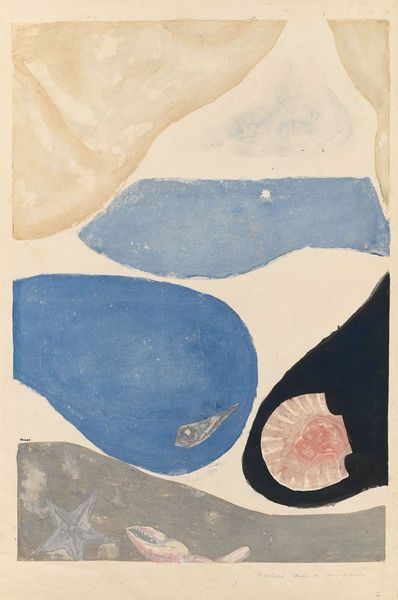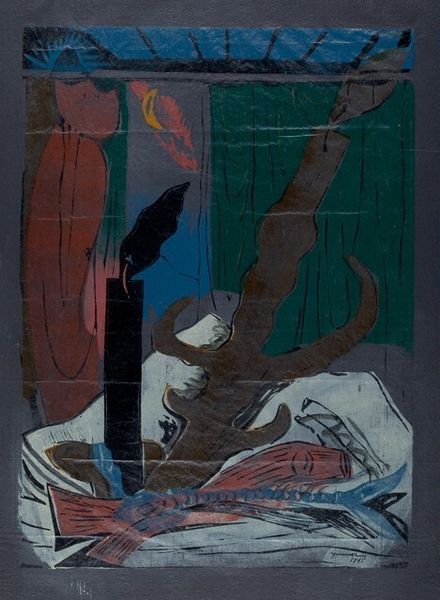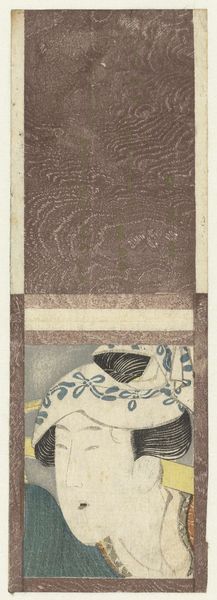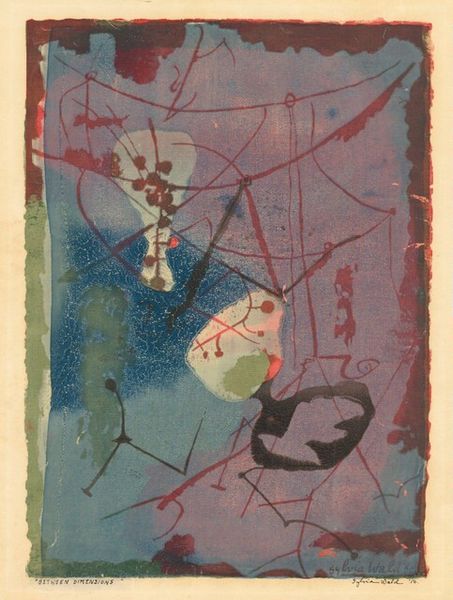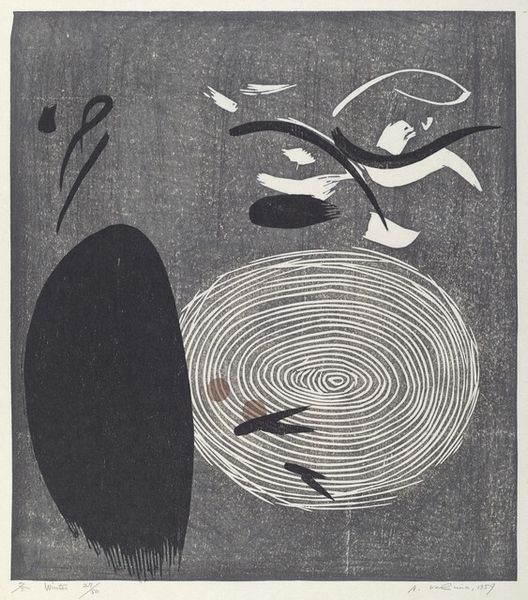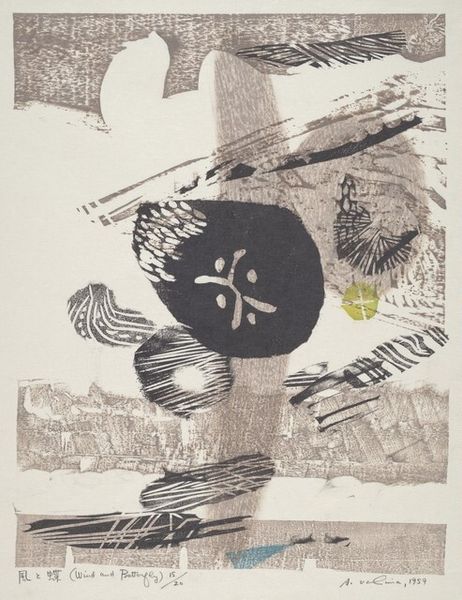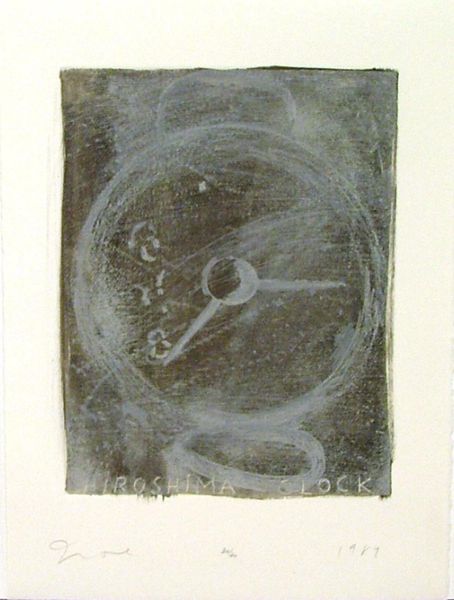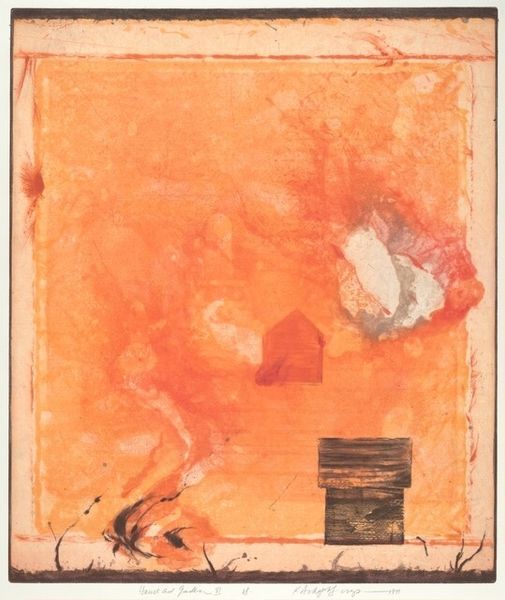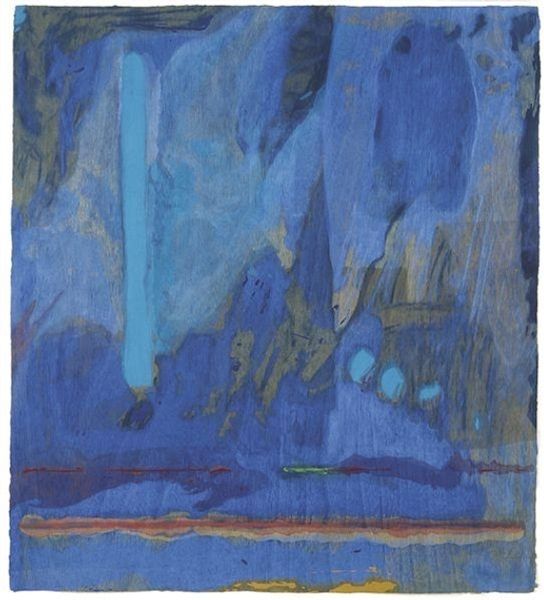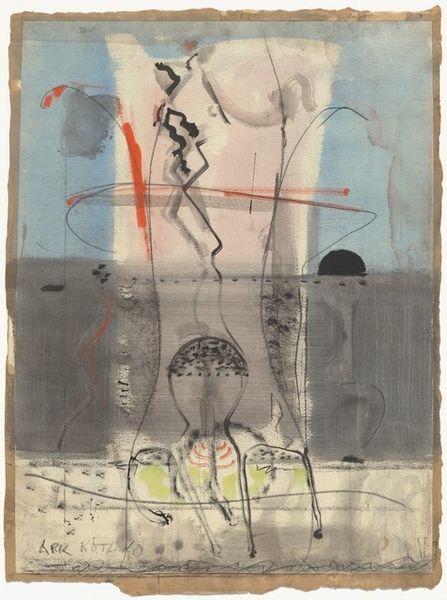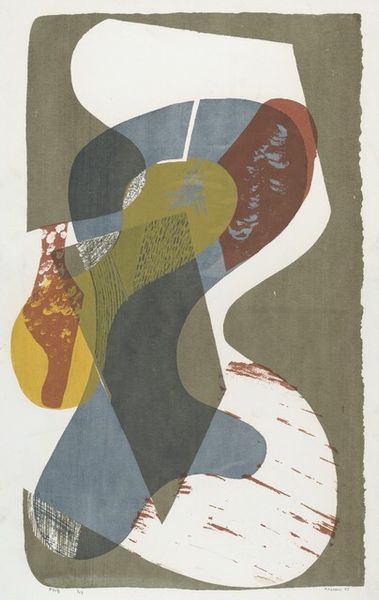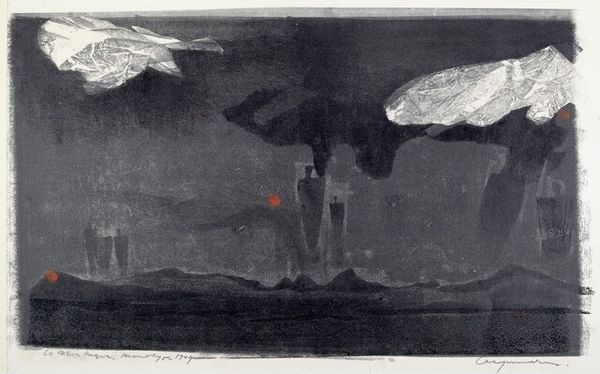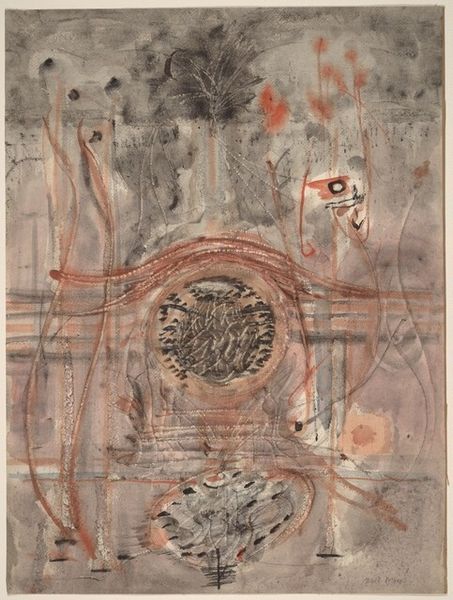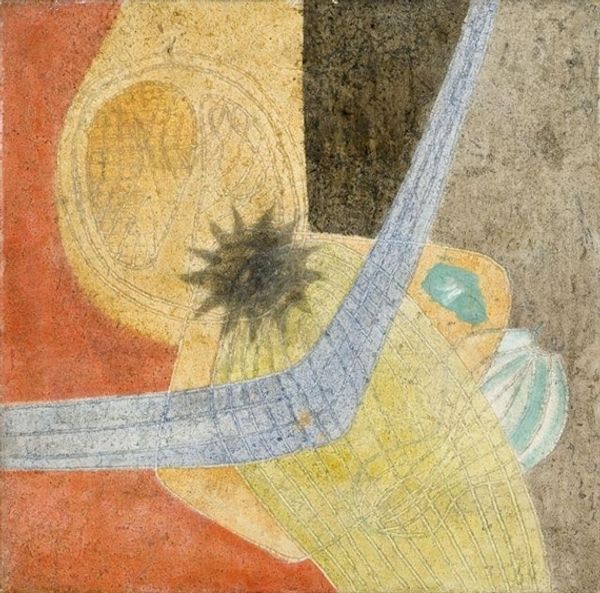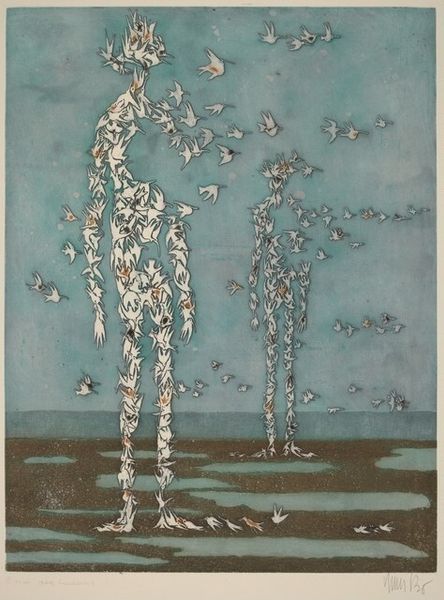
Copyright: Public domain Japan
Curator: Koshiro Onchi's "Fiction no. 1," created in 1953, presents us with a captivating mixed-media composition employing watercolor and various experimental techniques. The piece intrigues the eye, wouldn’t you agree? Editor: Immediately, I am struck by its ethereal, dreamlike quality. There's a real sense of symbolic weight to the juxtaposition of these abstracted forms—a darkness, even. What do you see in its composition? Curator: The composition is remarkably balanced. Note the contrast between the solid black sphere and the delicate lines that form the botanical figure; it creates a tension that pulls the eye across the canvas. The layering of watercolor washes adds to the sense of depth. Editor: The imagery feels intentionally disjointed, but to what end? We have a gloved hand, almost like an object removed from a Surrealist painting. Considering Japan's postwar climate, is Onchi reflecting on loss and uncertainty? Does that hand gesture towards ideas about class, alienation, or cultural change? Curator: It's an intriguing reading. Certainly, the presence of organic and geometric shapes plays an essential role in defining form itself. Take that leaf: its veining creates another dialogue between natural form and the artificial construct of art. Editor: Right. That interplay, when positioned within the context of rebuilding after such immense destruction, allows Onchi to reimagine organic figures as symbols. That could open possibilities for recovery, renewal. He appears to find a way to merge disparate symbols. Curator: Yes. It's an investigation of form through the layering of textures, color, and symbolic elements that pushes against the constraints of representation and taps into the power of abstraction. Editor: Abstraction as liberation, perhaps? Using ambiguity as a canvas on which viewers can project hopes and fears... that kind of nuanced visual language lends the work much contemporary relevance. Curator: It presents an intellectual and visual challenge that resonates through its exploration of shape, form, and material. Editor: It invites critical thinking, doesn’t it? And challenges us to actively question received ideas. Curator: Very much so. It is a compelling synthesis of postwar anxieties and innovative spirit, both embedded in material exploration.
Comments
No comments
Be the first to comment and join the conversation on the ultimate creative platform.
